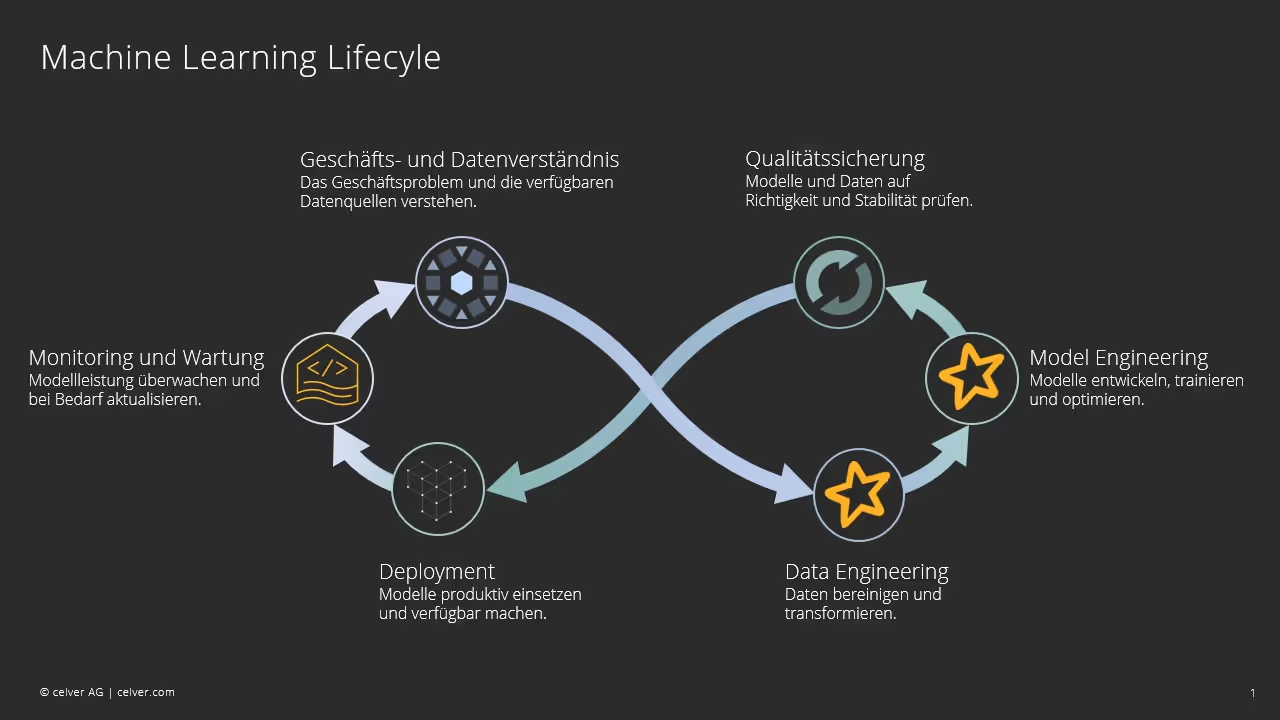From AI development to productive use

From proof of concept to productive scaling
Artificial intelligence (AI) is no longer a topic of the future, but a reality in the day-to-day business of numerous industries. Whether for optimizing business decisions, automating processes or improving the customer experience - AI is used in a wide variety of areas within companies.
However, the use of AI alone is not enough. The real challenge often lies less in the development of AI models and more in their long-term management, monitoring and scaling in productive operations. This is precisely where MLOps (Machine Learning Operations) comes into play - and forms the bridge between data science and stable IT processes.
A solid MLOps framework ensures that AI models are not only developed quickly, but can also be operated reliably, repeatably and efficiently. This not only minimizes risks, but also saves considerable costs - for example through automated processes, reduced downtime and more efficient use of resources.
Our MLOps assessment offers you a structured overview of the potential of MLOps. Together, we identify possible weaknesses in your current setup and show you specific steps for establishing a sustainable MLOps approach. The goal: to make your AI operations more economical, scalable and future-proof.
Your challenge and what keeps you busy
- The first machine learning projects have already been implemented or are planned
- Existing processes could be more standardized and automated
- Collaboration between data science, IT and specialist departments could be structured in a more targeted manner
- Monitoring and model management offer potential for greater transparency and efficiency
- The use of modern MLOps tools could usefully supplement existing workflows
- Challenges in the transition from proof of concepts to productive operation
What you get
- Assessment of your current maturity level in the area of MLOps
- Identification of technical and organizational gaps with regard to the creation of machine learning models
- Best practice suggestions for your industry and your use case
- Individual recommendation for action and roadmap
- Overview of relevant tools and technologies, such as MLFlow
- Common understanding between IT, data science and specialist departments
Contents
- Introduction to MLOps: goals, benefits, current trends
- Assessment of the status quo: analysis of the existing infrastructure, processes and roles
- GAP analysis & maturity check: comparison with best practices
- Tool and process proposals: Versioning, CI/CD, monitoring, governance
- Roadmap & quick wins: Recommendation for next steps





